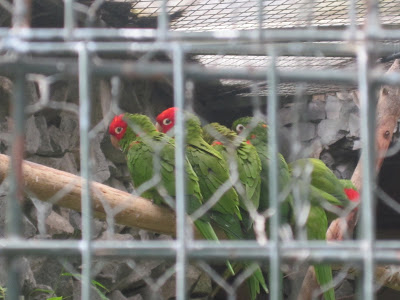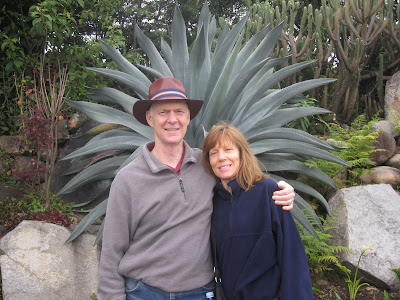We took a 4-hour bus ride from Guayaquil, as I didn’t want my parents to miss out on this integral experience of being a PCV in Ecuador. They had the opportunity to be entertained by bus vendors, be heckled by bus vendors, and try to use the tiny back-of-the-bus bathroom, all while winding our way slowly up and through the cloud-enshrouded mountains and valleys of Cajas National Park. At the end of the journey, we arrived in Cuenca.
The best thing about our time in Cuenca was the food. With a variety of restaurants featuring cuisines from different parts of the world, there was much to choose from. Especially considering that I was no longer constrained by a PCV budget. We pretty much stuffed ourselves every single night. And all during the day, too. If you want to know where to get the yummiest Colombian food; the best pitcher of canelazo; the most delicious passionfruit mousse dessert; or the 5-star hands-down all-time best family restaurant in the city, ask me. They’re state secrets, and I will not reveal them here. Actually, it would probably be best that I accompany you to Cuenca and physically point these establishments out, and perhaps accompany you into the restaurants as well…strictly as a matter of security.
But Cuenca is most famous for its churches and museums. One morning we took a trip just outside the city to visit the church at Biblián, which sits overlooking the town below and is built right into the side of the mountain. As you walk in, you see that behind the altar the wall is raw mountain rock – awe-inspiring in a different sort of way than the ornately decorated interiors of most Catholic churches one sees here.
I wanted to revisit the Museo de Arte Moderno, so Mom and I walked over to see the new exhibition of Cuenca artist Catalina Carrasco’s work. Her painting below is somewhat representative of the collection:
Dark hues, geometric patterns in the background, and a technique involving digital art and oil paint combined on canvas.
The most comprehensive museum we visited in Cuenca was the Museo del Banco Central “Pumapungo.” It offered an extensive exhibit on the history and culture of each of the three mainland regions of Ecuador (coast, Sierra, and Oriente).
One belief that has persisted through generations in the countryside is the one illustrated in the painting above: During the feriados or annual solstice celebrations, when a man passes out from alcohol consumption, it means that his soul is wandering, and his wife must stand watch over his body so that his soul can find its way back. The women in such communities traditionally do not drink.
Above is the traditional male dress for such solstice celebrations in the Sierra. And here’s some more from last year with my host family in Tabacundo, for both male and female.
I took this photo of a photo of an indigenous Oriente man about two seconds before the security guard stepped forward and politely informed me that photography is not allowed in the museum. So all those photos you just saw are a once-in-a-lifetime chance, folks. Unless you travel to Cuenca yourselves, in which case you must alert me so I can be your gastronomic tour guide.
The museum also includes extensive grounds with a botanical garden,
a bird exhibit,
and Incan ruins. Who should we run into at the archaeology portion of the tour but Menchie, absorbing the culture as always.
And also Indiana Jones, who will tell you that Panama hats are actually not from Panama at all. They are made in Ecuador. Betcha didn’t know that. Go tell all your friends.












No comments:
Post a Comment
Note: Only a member of this blog may post a comment.